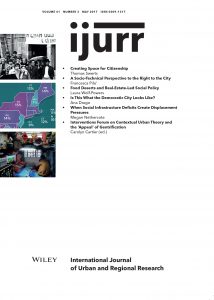In ‘Gentrification in Hong Kong? Epistemology vs. Ontology’, Ley and Teo examine what they find to be the absence of identification and naming of gentrification in Hong Kong. They argue for the need to look at urban redevelopment in non-Anglo-American cities, those in Asia Pacific at the very least, in a different light. They query the extent to which the concept of gentrification has been overly stretched to explain urban processes falling outside Anglo-American cities. This essay is a response to their argument. It presses for further and closer examination of local complexities and greater critical-theoretical reflection on the transferability of analytical concepts to different socio-economic contexts. Ley and Teo have raised some important questions for serious theoretical reflection and discussion. Yet they seem to have fallen into the problematic positions that they critique. Without sufficient attention to the part played by historical and local context in shaping the urban landscape, they have wrongly associated the absence of any identification of gentrification with the hegemony of a property-related ideology of social mobility. The unpacking of the different social and political processes and mechanisms in urban redevelopment in different stages of urban growth in Hong Kong alerts us to the complexities of the local.

